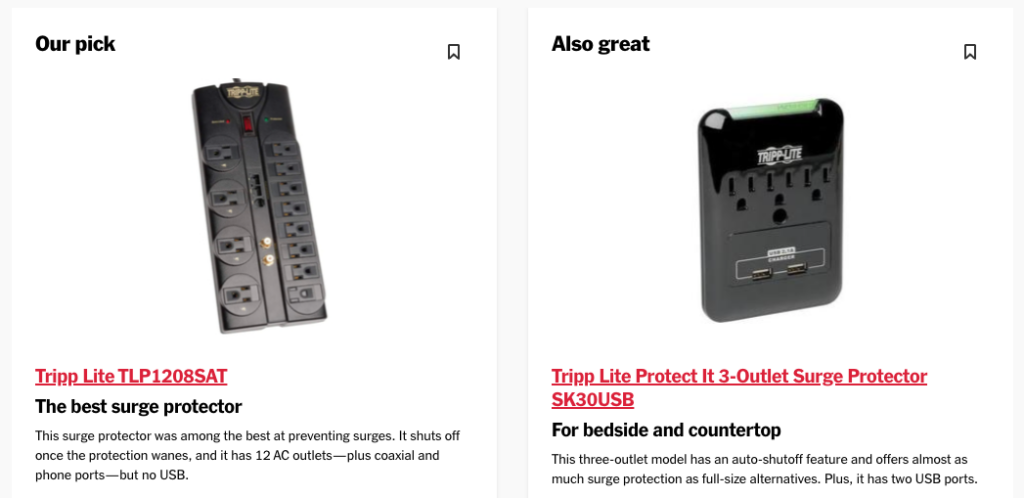Protecting Your Tech Gear from Damaging Power Fluctuations: A Comprehensive Guide
Introduction
Extreme weather events have become increasingly common, making it a challenging year to deal with their consequences. The impact of these weather events on technology may not seem obvious, but power fluctuations caused by heat waves, high winds, and lightning strikes can wreak havoc on electronic devices that are powered and connected to networks.
The Dangers of Power Fluctuations
Power fluctuations, whether it be spikes, surges, sags, brownouts, or blackouts, can be detrimental to your tech gear. It is essential to protect your most vulnerable devices from these fluctuations. However, relying on a cheap surge protector you’ve had since college might not be sufficient. It’s important to note that many power strips offer no surge protection at all.
Too Little Power
There are two scenarios when it comes to power fluctuations. First, we have sags and brownouts, which are drops in voltage. A sag is a short-term dip, while brownouts last longer. Blackouts, on the other hand, are complete power outages. Although sags and brownouts are less damaging than surges, they can still cause electronic devices to behave erratically or crash. The fluctuation in voltage, particularly when power is restored after an outage, can also stress components. Moreover, losing power completely can result in losing unsaved work and even lead to document or drive corruption.
Too Much Power
The second scenario involves spikes and surges, which are sudden and brief increases in voltage. Spikes are shorter than surges, but both can have a detrimental effect on sensitive electronic components. Excessive power can degrade or damage these components, reducing their lifespan or causing immediate failures.
The Solution: Uninterruptible Power Supplies (UPS)
An uninterruptible power supply (UPS) is the best solution to protect against both scenarios mentioned above. A UPS is essentially a large battery into which you can plug your Mac and other peripherals. It is connected to a wall outlet and constantly monitors the incoming power. If there is a power surge, if the voltage falls below a specific threshold, or if there is a complete power failure, the UPS switches to its internal battery as the power source. This transition happens so quickly that your Mac doesn’t even notice.
Using a UPS offers several benefits. When a blackout occurs, the UPS provides you with some time to save your work and shut down your devices properly, preventing data loss or drive corruption. Additionally, a UPS protects your equipment from spikes and surges, filtering out excessive voltage that could harm the devices connected to it. It is important to consider that UPSes require an additional expense, batteries need replacement every few years, and they occupy space under your desk. For home or small office UPS recommendations, consult Wirecutter. For larger installations, feel free to contact us.
Surge Protectors: An Alternative
If power outages are rare in your location, you may opt for a surge protector rather than a UPS. Surge protectors filter out voltage spikes and surges, ensuring your gear remains unharmed. They are smaller, less expensive than UPSes, and do not require battery replacements. However, it is important to note that the protection circuitry in surge protectors degrades over time, so they should be replaced every few years. High-quality surge protectors will alert you or cease functioning when they can no longer provide protection. To find reliable surge protectors, Wirecutter offers excellent recommendations.
Battery-Powered Devices and Lightning Strikes
If most of your expensive tech gear is battery-powered, you may consider forgoing a surge protector altogether. Battery-powered devices, such as MacBooks or iPhone power adapters, can protect against sags, brownouts, spikes, and surges to a certain extent. While the power adapter itself may incur damage, it is relatively inexpensive to replace.
However, it is crucial to note that no UPS, surge protector, or power adapter can protect against a direct lightning strike. Lightning is incredibly fast and powerful, sometimes reaching millions or even hundreds of millions of volts. Even with the equipment turned off, lightning can easily jump across an open switch if it has traveled long distances through the air to hit the ground. In areas prone to lightning strikes, it is advisable to unplug your most valuable devices entirely during severe storms.
Conclusion
Protecting your tech gear from damaging power fluctuations is of utmost importance, especially in a year riddled with extreme weather events. Depending on the frequency of power outages in your area and the nature of your devices, you may choose between using a UPS or a surge protector to safeguard your equipment. Battery-powered devices offer some level of protection as well, although they are not immune to power fluctuations. However, it is essential to recognize the limitations of these measures when it comes to direct lightning strikes. By taking the necessary precautions and investing in the appropriate equipment, you can ensure the longevity and functionality of your valuable tech gear.
Featured Image by iStock.com/HardRockShotz
